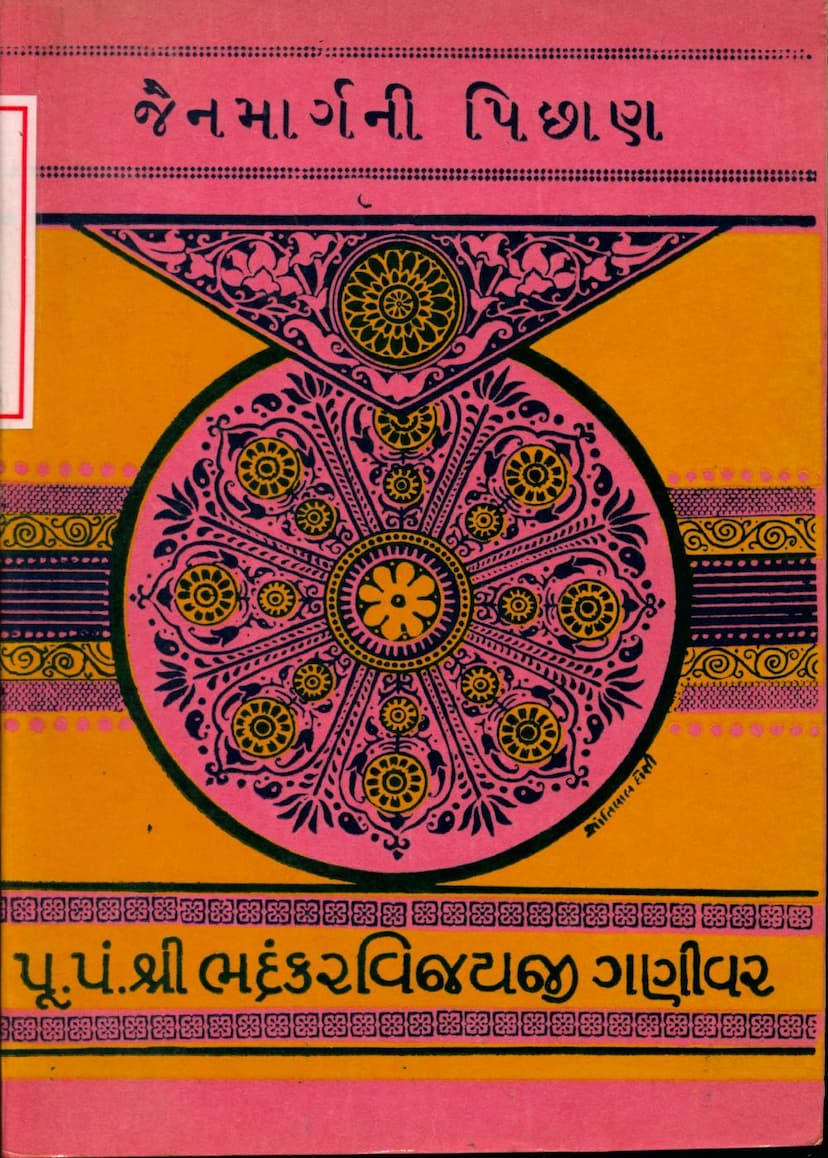Jain Margni Pichan
Added to library: September 2, 2025

Summary
Here's a comprehensive summary of the Jain text "Jain Margni Pichan" (Identification of the Jain Path) by Bhadrankarvijay, based on the provided pages:
The book "Jain Margni Pichan" is a guide to understanding the Jain path, authored by the esteemed Jain Acharya, Pujya Pandit Shri Bhadrankarvijayji Ganivar. It is published by Kusum Saurabh Kendra. This work is presented as the fourth edition, reflecting its popularity and dissemination.
The preface to the book emphasizes the core tenets of Jainism, stating that the path to liberation (Moksha) is comprised of Samyak Darshan (Right Faith/Perception), Samyak Gyan (Right Knowledge), and Samyak Charitra (Right Conduct). It highlights the interconnectedness of these three, stressing that faith without true knowledge is ignorance, knowledge without right conduct is mere penance, and conduct without right concentration is flawed meditation. True liberation is achieved through the harmonious integration and purification of all four – faith, knowledge, conduct, and meditation.
The book elaborates on the purification of these four aspects:
- Purification of Faith (Shraddha): This involves the purity of the objects of faith (the venerable), the faithful soul, and the means of faith.
- Purification of Knowledge (Gyan): This pertains to the purity of the knowable, the knower, and the means of knowledge.
- Purification of Conduct (Charitra): This focuses on the purity of the action, the actor, and the means of action.
- Purification of Meditation (Dhyana): This concerns the purity of the object of meditation, the meditator, and the means of meditation.
The text then identifies the core objects of faith in Jainism:
- Vitrag Dev (The Passionless Ones): These are the conquerors of internal enemies like attachment, aversion, and delusion, referred to as "Jinas" (victors). Their victory over passions is the seed of devotion, leading to the purification of the soul.
- Nirgrantha Guru (The Unattached/Renounced Ascetics): These are those who, though not yet passionless, constantly strive to become Vitrag. Their detachment from worldly possessions and even the self (body) is paramount.
- Shruta-Charitra Dharma (Scriptural Knowledge and Right Conduct): This refers to the teachings of the Vitrag Devs, lived by the Nirgrantha Gurus, which encompass both scriptural knowledge and ethical conduct.
The book emphasizes that true faith in the Vitrag Devs involves faith in their victory over passions and their inherent virtues. Similarly, faith in the Nirgrantha Gurus is a testament to the aspiration for passionlessness. The teachings of Shruta-Charitra Dharma, when followed, lead to the understanding of the true nature of the world and liberation, ultimately enabling the attainment of pure conduct.
The importance of Right Conduct (Charitra) is highlighted as essential for preventing harm to others. Until one refrains from causing suffering to others, one cannot escape personal suffering. The principle of non-violence (Ahimsa) in thought, word, and deed is presented as the sole means to stop the influx of karma. The text uses the analogy of seeds – a thorn seed yields a thorn, and a grain seed yields grain – to illustrate that suffering arises from causing suffering and benefit arises from causing benefit. Right conduct, as the avoidance of harm to others and the practice of helping them, is the root of virtue.
The author also dedicates significant portions to explaining the practical aspects of Jain practice, covering:
- Sadhu Dharma and Shravak Dharma (Monastic and Layperson's Dharma): These are presented as two intertwined paths to spiritual development, sharing the same ultimate goal of liberation, differing only in the intensity of practice.
- Shraddha (Faith): The book discusses the crucial role of faith, asserting that even without extensive lettered knowledge, true faith in the teachings of the omniscient can lead to spiritual progress. The example of devoted women who may not be lettered but possess profound faith is cited.
- The Importance of Upadesha (Teachings) and Shravana (Listening): Regular listening to the teachings of learned Gurus is highlighted as a means to develop spiritual fervor, detachment from the world, and aspiration for liberation.
- Sravaka's Duties: This section details the essential daily practices and observances of a lay Jain, including morning prayers, veneration of the Jin idols, listening to scriptures, adherence to vows, and acts of charity.
- The Twelve Vows of a Sravaka: These are meticulously explained, covering the principles of non-violence, truthfulness, non-stealing, celibacy, non-possessiveness, and various restrictions on consumption and worldly activities.
- The Significance of Final Practices (Antim Aradhana): The book emphasizes the critical importance of proper conduct at the time of death, including contemplating the transient nature of life and possessions, seeking forgiveness, and remembering the Pancha Paramesthi (the five supreme beings in Jainism).
- The Purity of Jain Deities (Jin Param Ishwar): The text clarifies that Jain deities are not creators but enlightened beings who have conquered internal enemies and possess perfect knowledge and perception. They are revered for their teachings that guide beings towards liberation, not for granting worldly boons. The absence of passions (ragadi) and imperfections (dosha) is highlighted as their defining characteristic.
- The Merit of Chanting the Names of Tirthankaras: The book details the auspiciousness and benefits derived from chanting the names of the Tirthankaras, emphasizing their purity, auspiciousness, and their ability to guide beings towards spiritual well-being.
In essence, "Jain Margni Pichan" serves as a foundational text for understanding the philosophy and practice of Jainism, guiding individuals towards a life of ethical conduct, spiritual knowledge, and unwavering faith, ultimately leading to the path of liberation.